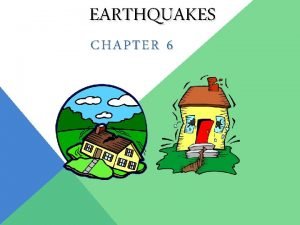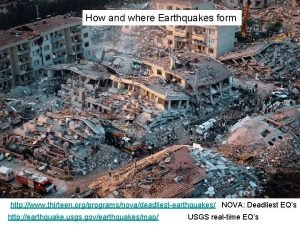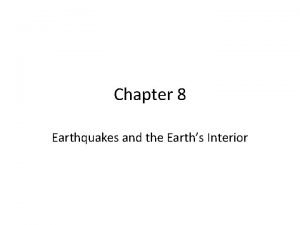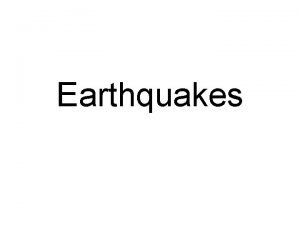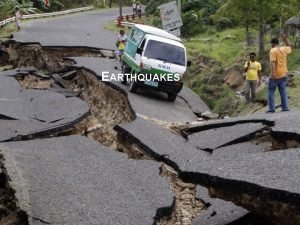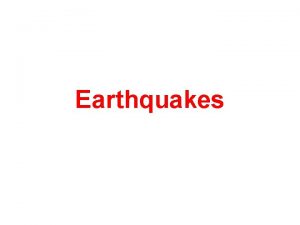Earthquakes Q what are Earthquakes A Earthquakes are







- Slides: 7

Earthquakes

Q: what are Earthquakes? • A: Earthquakes are the Earth's natural means of releasing stress. When the Earth's plates move against each other, stress is put on the lithosphere. When this stress is great enough, the lithosphere breaks or shifts.

Q: Where do Earthquakes occur most often? • You will find that most places around a volcano, a fault line, or plate boundary are more prone to earthquakes. There a total of fifteen plates on the earth. Each of these plates is constantly moving.

Q: How likely is your area to experience an Earthquake? • Most residents of the American Midwest, don't think much about earthquakes. After all, all of the earthquakes we hear about are in California, Japan, Italy, or other far away places. Make no mistake, some of the biggest and most devastating earthquakes were in North America. .

Parts of an Earthquake Focus: The center of an earthquake Epicenter: The strongest point

Safety plan • Choose a safe place in every room--under a sturdy table or desk or against an inside wall where nothing can fall on you. • Practice DROP, COVER, AND HOLD ON at least twice a year. Drop under a sturdy desk or table, hold on, and protect your eyes by pressing your face against your arm. If there's no table or desk nearby, sit on the floor against an interior wall away from windows, bookcases, or tall furniture that could fall on you. Teach children to DROP, COVER, AND HOLD ON!

. • Consult a professional to find out additional ways you can protect your home, such as bolting the house to its foundation and other structural mitigation techniques. • Take a first aid class from your local Red Cross chapter. Keep your training current. • Get training in how to use a fire extinguisher from your local fire department.

